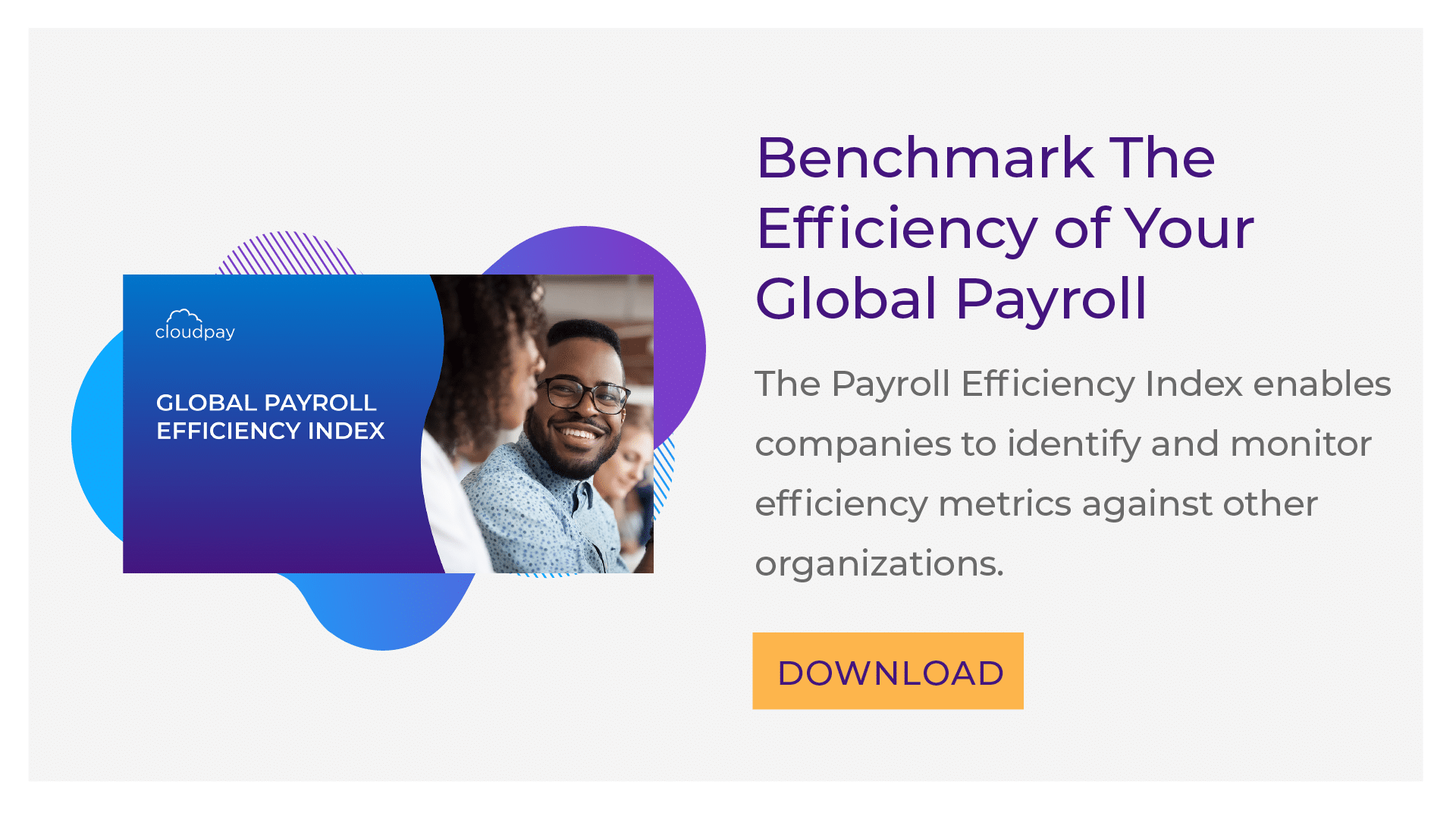Processing global payroll has always been a complex endeavour. Varying tax systems, employment laws, and statutory requirements mean every payroll is different, sometimes dramatically so. In recent years, the changing nature of the global workforce and the expansion of data protection regulations have compounded that complexity. Today, the focus on regulatory payroll compliance and risk management is forefront of any multinational business strategy.
When evaluating the compliance risk of key company data and activities, payroll will always be one of the first business processes scrutinized. For the majority of organizations, the payroll function is responsible for the largest source of company-specific data, and that information is constantly being processed and updated — meaning it is often potentially at risk.
Visibility of this critical data and its processing is essential to maintaining effective compliance. Unfortunately, achieving that visibility is not always straightforward. The majority of global payroll providers today operate as aggregators, meaning they contract payroll processing in various countries to local providers and pull the results into a single, customer-facing dashboard that gives the impression that all your payroll data is in one place, when it’s really in as many countries as you are. The trouble with this method is that your visibility (and usually your access) is limited to the data in your provider’s dashboard.
The only way around this important issue is to use a unified payroll solution, meaning one that uses a single platform for all processing and data management. However, while a unified solution is a critical place to start, it’s not the only step involved in managing risk and compliance. The following best practices can help companies achieve a more accurate, reliable, and data-driven compliance strategy.
1. Use the cloud to support global shared services.
Project management, time and attendance, benefits administration, financial services, and many other functions are deeply connected to compliance — as are all the various business technologies that serve them. As such, a company’s global payroll, payments, and compliance teams interact with many disconnected solutions, some hosted in-house, some in the cloud, some in shared services, and some proprietary to local partners.
A well-equipped, cloud-based payroll system can act as a single access point for integrating all those systems with the compliance function, especially when organizations make a concerted effort to streamline operations across all business areas. That’s why a move to the cloud is often most successful, from a compliance perspective, when initiated as part of a shift to a global shared services environment.
Additionally, use of cloud technology facilitates access and collaboration across boundaries and around the world, a capability that’s becoming increasingly important as the workforce becomes more mobile and contract-based. Payroll data, processing analytics, and even internal audits can be viewed in real-time as needed, which supports greater agility for growing companies as well as anytime visibility for the compliance department.
2. Prioritize process automation and data standardization.
In addition to using the cloud to integrate disparate solutions, organizations can leverage a consolidated global solution to support key improvement initiatives, such as more automated, standardized processes. From a compliance perspective, this is a key step toward greater data privacy and risk mitigation.
Why so? Because where there are service, processing, or data quality issues, there tend to be compliance issues. Heavily manual processes lead to manual errors, which lead to corrections, re-filings, and the reprocessing of information — all of which can slow down the payroll cycle and create compliance vulnerabilities.
When data formats and processing workflows are standardized across the payroll organization, accuracy rates and cycle times improve. Additionally, the ability to view and trace the data in a consistent format throughout the process increases auditability as well as the ability to prove compliance, which is now a critical regulatory requirement of GDPR and other data protection directives.
Implementing standardized and automated processes globally also enables the Chief Compliance Officer (CCO) to streamline risk assessment and use a single compliance program to monitor activity across the enterprise. In turn, standardized compliance processes can help a company adapt more quickly to regulatory changes and become aware of non-compliance risks as they emerge.
3. Phase a global implementation wisely.
Enterprise software implementations across any business function can be complex and time-consuming. Given the far-reaching nature of global payroll, it’s vital for organizations to plan rollouts tactically in order to preserve compliance throughout the transformation.
Every payroll service provider will offer their own thoughts on planning a smart implementation timeline, but there are some proven best practices every project team should consider, irrespective of their chosen solution. One example: rather than choosing to begin with your highest volume country or region, start with one of your simplest payrolls to give everyone involved the chance to get up to speed with the new system and address any issues that arise.
Giving your team adequate time to learn and adjust to the new solution is key to ensuring consistency with compliance activities. It’s also important for transition teams to have the opportunity to identify needs for additional compliance training on the new system before it’s in place across the enterprise.
Ultimately, global payroll compliance is one of the most important responsibilities of any organization. And as compliance requirements continue to evolve around the world, companies need to embed awareness of that responsibility as well as the means of meeting those requirements into every function. With the right tools for real-time tracking and a more standardized approach to global payroll, organizations can take control of the compliance function in a more effective, transparent way.



